
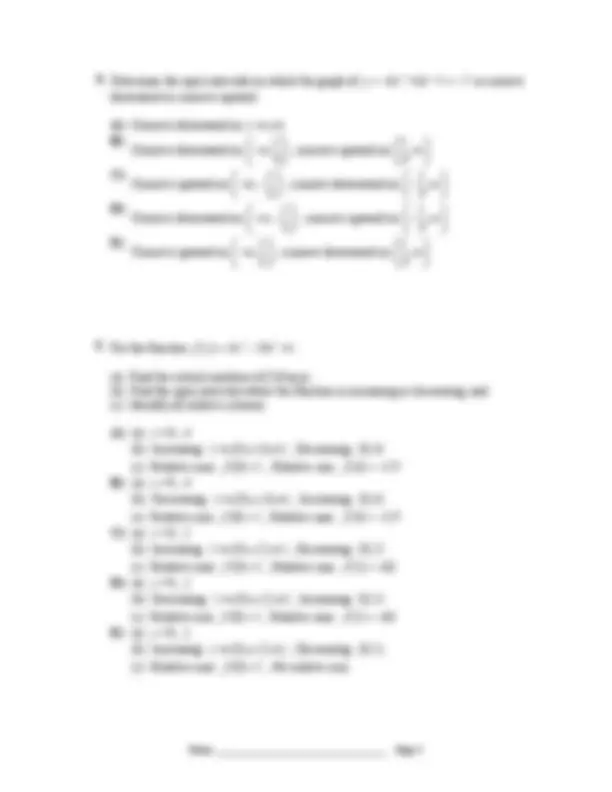
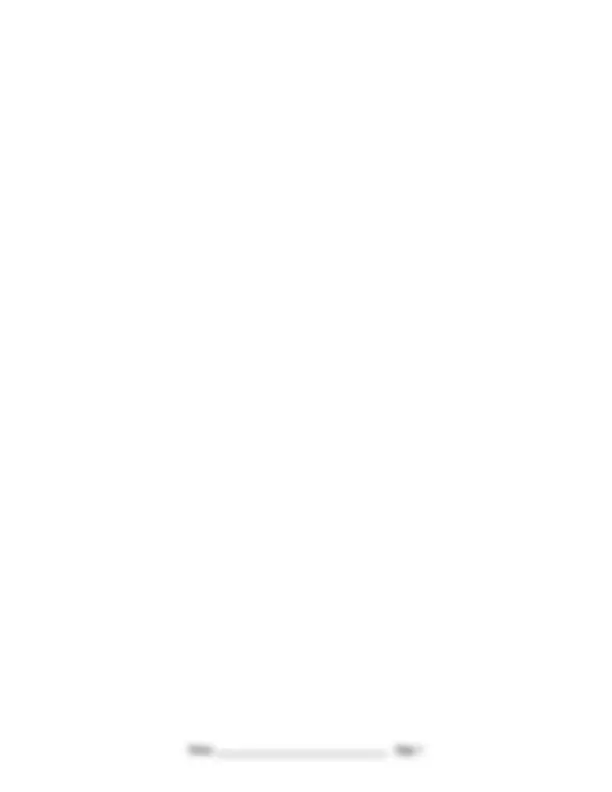
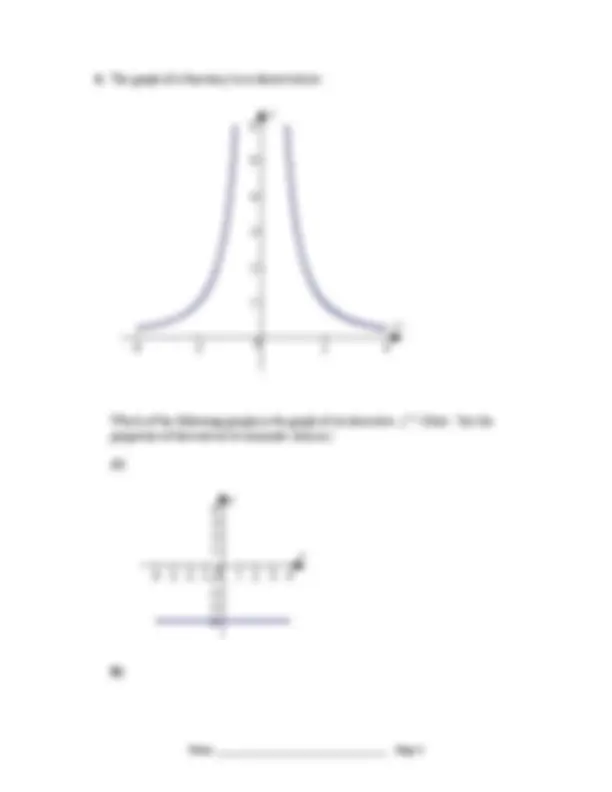
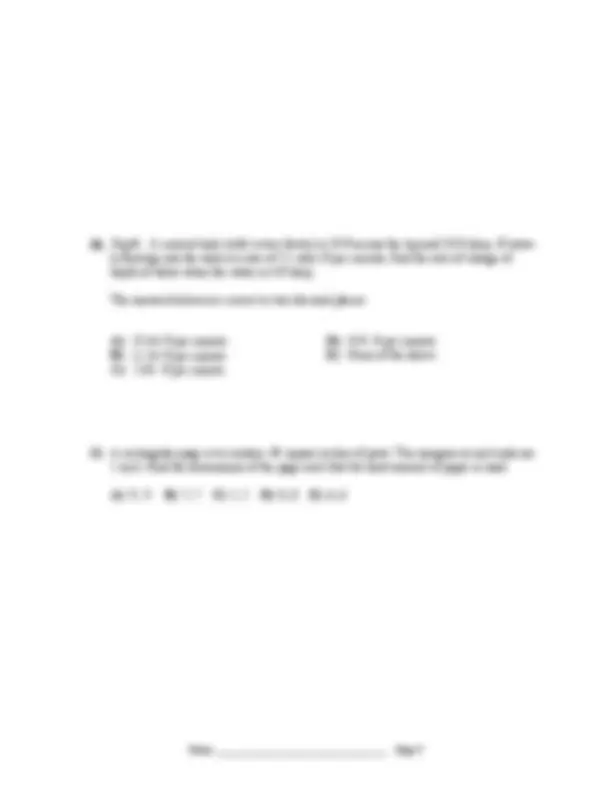
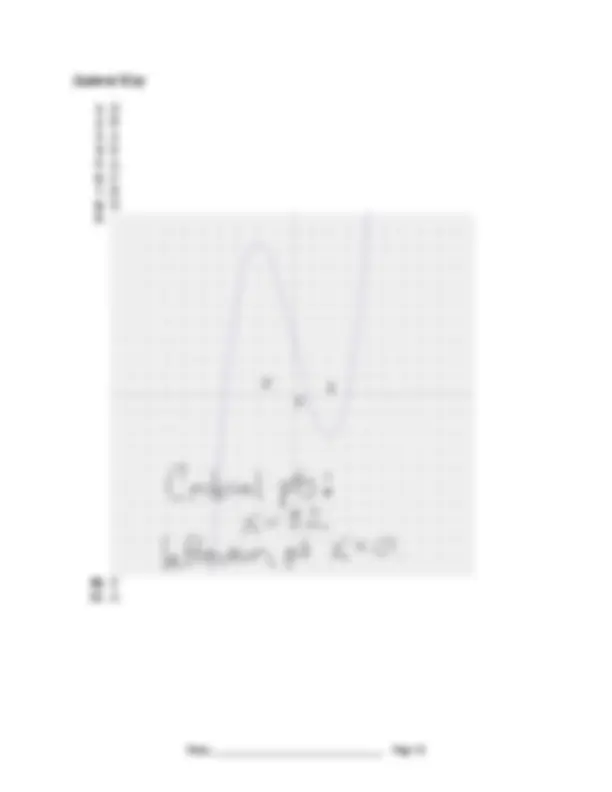


Study with the several resources on Docsity

Earn points by helping other students or get them with a premium plan


Prepare for your exams
Study with the several resources on Docsity

Earn points to download
Earn points by helping other students or get them with a premium plan
Community
Ask the community for help and clear up your study doubts
Discover the best universities in your country according to Docsity users
Free resources
Download our free guides on studying techniques, anxiety management strategies, and thesis advice from Docsity tutors
Material Type: Exam; Class: Elements of Calculus; Subject: Mathematics; University: University of Missouri - Columbia; Term: Spring 2006;
Typology: Exams
1 / 9

This page cannot be seen from the preview
Don't miss anything!






Name: __________________________ Student Number: _________________
Section Number/Instructor Name: _________/_____________________________
Signature:____________________________________
Instructions: This exam consists of both multiple choice and short answer problems. You must show your work for all problems, including the multiple choice problems, to receive credit on them. For the multiple choice problems, you may use a calculator and a pen or pencil, but you may not use any notes or books. Students who cheat will receive zero points on the exam and will be subject to the unversity's disciplinary procedure for academic dishonesty. Cheating includes, but is not limited to, looking at any other student's exam, looking at any books or notes during the exam, or using any electronic device for any purpose other than doing arithmetic. For example, you may not use cell phones, calculators, or any other electronic device during this exam to graph equations or obtain mathematical formulas.
Problem Total Value Student Score
Total 100
A) 1 B) -3 C) -1 D) 2 E) None of these
A) True B) False
decreasing.
A) Increasing:
; Decreasing:
Decreasing:
; Increasing:
C) (^) Increasing on (^) ( −∞ ∞, ) D) (^) Decreasing on (^) ( −∞ ∞, ) E) None of the above
Which of the following graphs is the graph of its derivative f ′^? (Hint: Use the properties of derivatives to eliminate choices.)
A)
following statements are true.
A) The point x = 0 is not a critical point of f. B) The point x = 0 is a critical point of f, but is not a local extreme point. C) The point x = 0 is a critical point of f, and is a local maximum. D) The point x = 0 is a critical point of f, and is a local minimum. E) None of these are true.
A) y − 2 = 2( x− 1) D) y − 1 = 2( x−2) B) y − 1 = −2( x− 2) E) None of these. C) y + 1 = 2( x+2)
Suppose that ( ) 2 4
d f x x dx
= − +. Draw a possible graph for f. On this graph include on
the x-axis the correct x-coordinates of any critical points and any inflection points of f. To recieve credit for your graph, it must be clear from your solution how you used calculus to obtain the graph.
The answers below are correct to two decimal places.
A) 35.64 ft per minute D) 8.91 ft per minute B) (^) 11.34 ft per minute E) None of the above C) 2.84 ft per minute
A) 9, 9 B) 7, 7 C) 5, 5 D) 8, 8 E) 6, 6